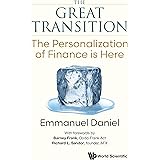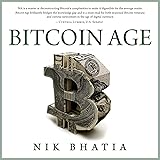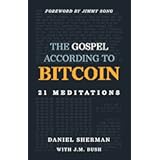How to Buy Bitcoin for Beginners: Your Easy Guide to Purchasing Cryptocurrency
In the rapidly evolving world of digital finance, cryptocurrencies like Bitcoin have captured significant global attention. Reports indicate that over 300 million people worldwide owned cryptocurrency in 2023, showcasing a dramatic increase in adoption over recent years. While this growth suggests widespread interest, many beginners still wonder how to easily and securely purchase Bitcoin to begin their own journey into the crypto space.
The video above provides a concise introduction to getting started with your first Bitcoin purchase. However, the intricacies of the process, including choosing the right platform and understanding secure transfer methods, can sometimes feel daunting for newcomers. This comprehensive guide aims to expand upon those initial steps, offering a more detailed roadmap for beginners looking to confidently buy Bitcoin and manage their digital assets.
Choosing Your Entry Point: Selecting a Trusted Cryptocurrency Exchange
The first and most crucial step in purchasing Bitcoin involves selecting a reliable cryptocurrency exchange. These platforms act as digital marketplaces where you can convert traditional fiat currency, like Canadian dollars or US dollars, into various cryptocurrencies. While numerous exchanges exist, finding a platform known for its security, user-friendliness, and regulatory compliance remains paramount for new investors.
Coinbase, as highlighted in the video, stands out as a highly recommended option for beginners due to its intuitive interface and strong reputation. Established in 2012, Coinbase has become one of the largest and most well-known crypto exchanges globally, serving millions of users. On the other hand, less reputable platforms have unfortunately emerged and disappeared overnight, often taking users’ funds with them, a risk the speaker explicitly warns against from his personal experience since 2013.
When you opt for a trusted exchange like Coinbase, you are entrusting your funds to a company with significant financial backing and robust security protocols. Many beginner users appreciate its straightforward process for linking bank accounts and debit cards, simplifying the initial funding of your crypto purchases. Furthermore, the platform often offers incentives, such as a $10 free Bitcoin bonus when signing up through a referral link, providing a small but welcome head start for new users.
Navigating the Purchase Process: A Step-by-Step Guide to Buying Bitcoin
Once you have chosen an exchange and completed the initial sign-up, the actual process of buying Bitcoin is surprisingly straightforward. Coinbase, for example, requires you to complete a verification process known as KYC (Know Your Customer), which involves providing personal identification to comply with financial regulations. This step ensures the security of your account and helps prevent fraudulent activities, which is a common practice across all regulated financial services.
After your account is verified, you will need to link a payment method, which can include bank transfers, debit cards, or even PayPal in some regions. While linking a bank account might take a few days for initial verification, it often offers lower fees compared to instant purchases made with a debit card. Conversely, debit card transactions provide immediate access to your purchased Bitcoin but typically come with slightly higher percentage-based fees, a trade-off for speed and convenience.
With your payment method established, you can proceed to the “Buy/Sell” section of the platform. Here, you simply select Bitcoin as the cryptocurrency you wish to acquire. You can either specify the amount of fiat currency you wish to spend, such as “$100 Canadian,” or enter the exact quantity of Bitcoin you want to buy, and the system will automatically calculate the equivalent value. It is worth noting that platforms often impose weekly purchase limits, which vary depending on your verification level and transaction history; for instance, the speaker mentioned a personal $1,500 weekly limit.
Before finalizing your transaction, the exchange will display a clear summary, including the current Bitcoin price, the total amount you will receive, and any associated transaction fees. These fees are how exchanges generate revenue, and they can vary, so always review this information carefully before confirming your purchase. Once confirmed, your payment will be processed, and the Bitcoin will be deposited into your exchange wallet, usually within minutes for instant payment methods or a few days for bank transfers.
Understanding Your Crypto Portfolio: Beyond Just Bitcoin
While the focus is often on how to buy Bitcoin, it is important to remember that the cryptocurrency market encompasses thousands of different digital assets. The video briefly mentions other prominent cryptocurrencies like Ethereum and Bitcoin Cash, which are also available for purchase on Coinbase and other major exchanges. Ethereum, for example, is the second-largest cryptocurrency by market capitalization and powers a vast ecosystem of decentralized applications and smart contracts.
Bitcoin Cash, on the other hand, emerged from a “fork” of Bitcoin in 2017, aiming to provide faster and cheaper transactions by increasing its block size limit. Understanding these different assets can broaden your perspective on the utility and potential of blockchain technology beyond simply monetary transactions. Many investors choose to diversify their holdings across several cryptocurrencies, each with unique use cases and market dynamics.
However, for beginners, focusing on a well-established asset like Bitcoin is often the most prudent starting point. Gaining familiarity with its market behavior, security considerations, and transaction processes lays a solid foundation for exploring other digital assets later. Always conduct thorough research before investing in any cryptocurrency, as the market is known for its volatility and speculative nature.
The Crucial Role of an Intermediary Wallet for Secure Transfers
After successfully purchasing your Bitcoin, a critical step, especially for specific use cases like depositing into online sportsbooks, involves transferring your assets to an intermediary wallet. The speaker issues a strong “word of warning” against sending Bitcoin directly from an exchange like Coinbase to certain service providers, such as gambling sites. This is because many regulated exchanges maintain strict terms of service and compliance policies, potentially leading to account suspension and asset seizure if funds are directly linked to high-risk activities.
An intermediary wallet, often referred to as a “self-custodial” or “non-custodial” wallet, provides you with full control over your private keys and, consequently, your cryptocurrency. Websites like Blockchain.com offer free and user-friendly web wallets that serve this purpose perfectly. By moving your Bitcoin from the exchange to your personal wallet, you create a necessary buffer between your regulated exchange account and any subsequent transactions that might fall outside the exchange’s approved activities.
This process adds an extra layer of privacy and security, ensuring that your primary exchange account remains in good standing while allowing you the freedom to utilize your digital assets as you see fit. Understanding the distinction between an exchange-held wallet and a personal, self-custodial wallet is fundamental for any serious cryptocurrency user. This vital step helps protect your funds and ensures compliance with the varying rules of different financial platforms.
Executing Secure Transfers: From Exchange to Intermediary and Beyond
Transferring Bitcoin involves a few careful steps to ensure your funds reach their intended destination safely. First, you will need to obtain your unique wallet address from your chosen intermediary wallet provider, such as Blockchain.com. This address is a long string of alphanumeric characters, essentially your digital post office box for receiving cryptocurrency, and it is crucial to copy it accurately to avoid errors.
Next, return to your exchange platform, navigate to the “Send” or “Withdraw” section, and paste your intermediary wallet address into the recipient field. You will then specify the amount of Bitcoin you wish to transfer. Double-checking the address is imperative; a single incorrect character can result in irreversible loss of funds, a common and costly mistake for new users in the crypto world.
Once the Bitcoin has arrived in your intermediary wallet, typically within minutes depending on network congestion and transaction fees, you can then proceed to send it to its final destination. Whether this is an online sportsbook, another service, or even another personal wallet, the process remains largely the same. Many services provide a QR code that you can scan with your smartphone’s wallet app, which automatically populates the recipient address, significantly simplifying the transfer process and reducing the chance of manual errors.
Each transfer on the Bitcoin blockchain incurs a small transaction fee, often called a “miner fee,” which is paid to the network participants who process and verify transactions. These fees can fluctuate based on network demand; however, they are usually minimal for standard transfers. Always confirm the recipient’s address one last time before initiating any transfer, especially for significant amounts, as blockchain transactions are immutable and cannot be reversed once confirmed.
Best Practices for Bitcoin Ownership and Security
Beyond the mechanics of purchasing and transferring, responsible Bitcoin ownership involves adopting several key security practices. Firstly, always enable two-factor authentication (2FA) on your exchange and wallet accounts, adding an essential layer of security beyond just a password. This might involve using an authenticator app or a physical security key, making it significantly harder for unauthorized individuals to access your funds.
Secondly, never share your private keys or seed phrase with anyone, as these are the ultimate keys to your cryptocurrency. Keeping them offline, perhaps on a piece of paper stored securely, is often recommended over digital storage methods that could be vulnerable to hacking. Remember, with self-custodial wallets, you are entirely responsible for the security of your funds; there is no bank or institution to recover them if lost or stolen.
Furthermore, staying informed about market trends and potential scams is vital in the dynamic cryptocurrency landscape. Phishing attempts and fraudulent schemes are unfortunately common, often targeting new users. Only use trusted websites, be wary of unsolicited messages, and always verify the legitimacy of any platform or service before interacting with it or sharing personal information. Starting with smaller amounts allows you to gain experience without undue financial risk.
Finally, understanding that Bitcoin, like all cryptocurrencies, can be highly volatile is crucial for managing expectations. Its price can fluctuate significantly over short periods, meaning the value of your initial purchase could change rapidly. However, by adhering to secure practices and educating yourself, buying Bitcoin can be a straightforward and rewarding experience for any beginner eager to explore the world of digital assets.







